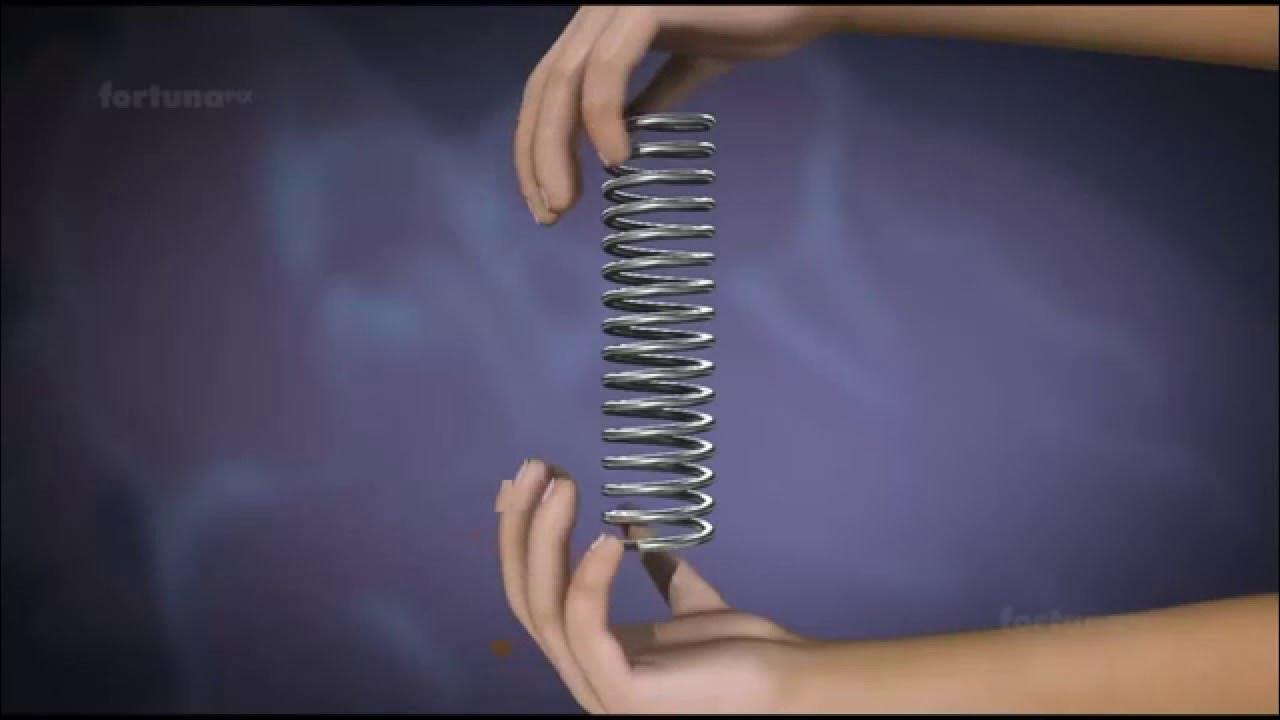elasticity_part 3
Summary
TLDRThis video discusses the concept of elastic potential energy and work done in deforming a material, such as a rod or wire, under an external force. It explores the volume of the material and how elasticity leads to energy storage. The script covers key equations related to stress and strain, including the derivation of elastic potential energy per unit volume. The topic connects theoretical mechanics with practical applications, offering insights into material deformation and energy transformation, with a focus on understanding the relationships between force, elongation, and energy storage.
Takeaways
- 😀 The volume of a material remains unchanged during deformation under certain conditions.
- 🎶 Music is used as a backdrop to enhance the content, providing a more engaging learning experience.
- 📊 The relationship for volume change in deformation involves terms like delta r, r, and delta l.
- 📐 The formula for potential energy stored in a deformed body includes factors such as force, area, and elongation.
- 💡 Work done in stretching a material, such as a rod or wire, is stored as elastic potential energy.
- ⚙️ An external force is applied to deform the material, and this force is crucial in determining the amount of work done.
- 🔧 The concept of elasticity is central to understanding how materials respond to deformation and the energy stored within them.
- 📈 The elastic potential energy per unit volume can be expressed as half the product of stress and strain.
- 🔍 Key derivations in this context include the elongation formula and the relationship between force, area, and elongation.
- 🎥 The topic will continue in future videos, diving deeper into related concepts such as transformations and transportation of energy.
Q & A
What does the volume of the wire or rod remain unchanged imply?
-The statement means that the total volume of the wire or rod does not change when it is stretched. Even though the shape may change, the material's volume remains constant.
What is the significance of 'sigma' in the script?
-Sigma (σ) is defined as the ratio of the change in radius (Δr) to the original radius (r), or the change in length (Δl) to the original length (l). It is typically used to represent stress or strain in a material.
How does the volume change relate to the deformation of the wire or rod?
-The script mentions that the volume remains constant during deformation, even though the shape may change. This reflects the conservation of mass in the material, meaning no volume is lost or gained during stretching.
What does the term 'elastic potential energy' refer to?
-Elastic potential energy is the energy stored in a material when it is deformed (stretched or compressed) and has the potential to return to its original shape. The work done in stretching or compressing the material is stored as this energy.
What is meant by the 'work done in stretching' a wire or rod?
-The work done in stretching refers to the energy applied to the material (wire or rod) to deform it. This energy is stored as elastic potential energy and is a function of the force applied and the amount of stretch.
What role does the external force play in deforming the wire or rod?
-The external force (denoted as F in the script) is responsible for deforming the wire or rod. It causes the material to stretch or compress, and the amount of deformation depends on the magnitude of the applied force.
What is the relationship between stress and strain in the context of elasticity?
-Stress is the force per unit area applied to a material, while strain is the deformation or change in shape (e.g., elongation) that results from the applied stress. The script emphasizes that elastic potential energy is a function of both stress and strain.
What does the formula 'elastic potential energy per unit volume = ½ * stress * strain' represent?
-This formula expresses the elastic potential energy stored per unit volume of the material. It shows that the energy stored in the material depends on both the applied stress and the resulting strain.
How is the elongation of the wire or rod related to the change in length?
-The elongation of the wire or rod is related to the change in length (Δl). The elongation is the difference between the final length and the initial length, and it is key in determining the strain and thus the elastic potential energy stored in the material.
What is the purpose of the derivation presented in the script?
-The derivation aims to establish the formula for elastic potential energy stored in a stretched wire or rod, helping to understand the relationship between the applied force, material properties, and deformation. It also provides the equation for potential energy per unit volume in terms of stress and strain.
Outlines

このセクションは有料ユーザー限定です。 アクセスするには、アップグレードをお願いします。
今すぐアップグレードMindmap

このセクションは有料ユーザー限定です。 アクセスするには、アップグレードをお願いします。
今すぐアップグレードKeywords

このセクションは有料ユーザー限定です。 アクセスするには、アップグレードをお願いします。
今すぐアップグレードHighlights

このセクションは有料ユーザー限定です。 アクセスするには、アップグレードをお願いします。
今すぐアップグレードTranscripts

このセクションは有料ユーザー限定です。 アクセスするには、アップグレードをお願いします。
今すぐアップグレード5.0 / 5 (0 votes)






